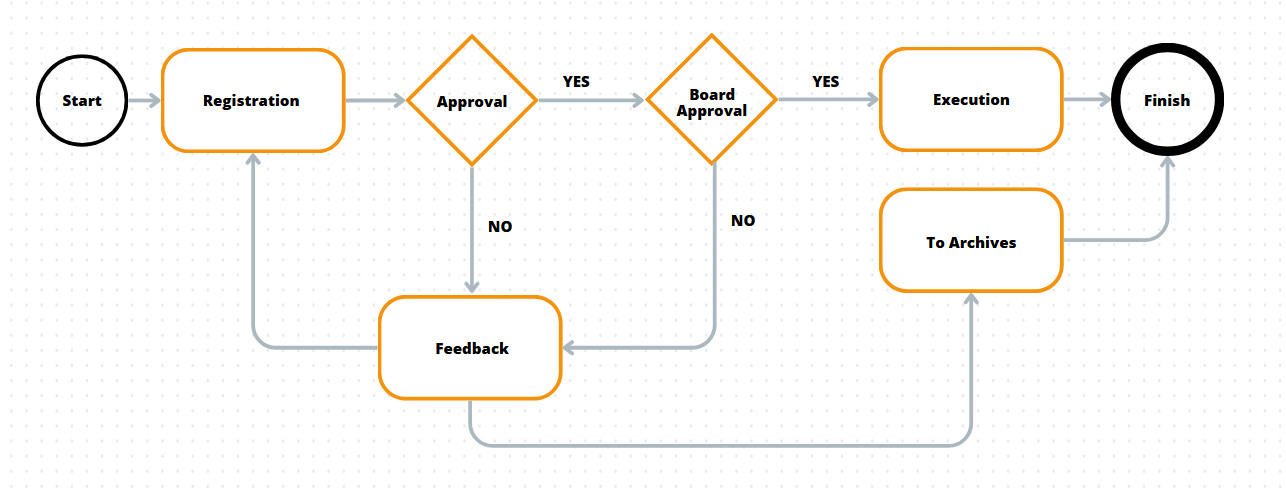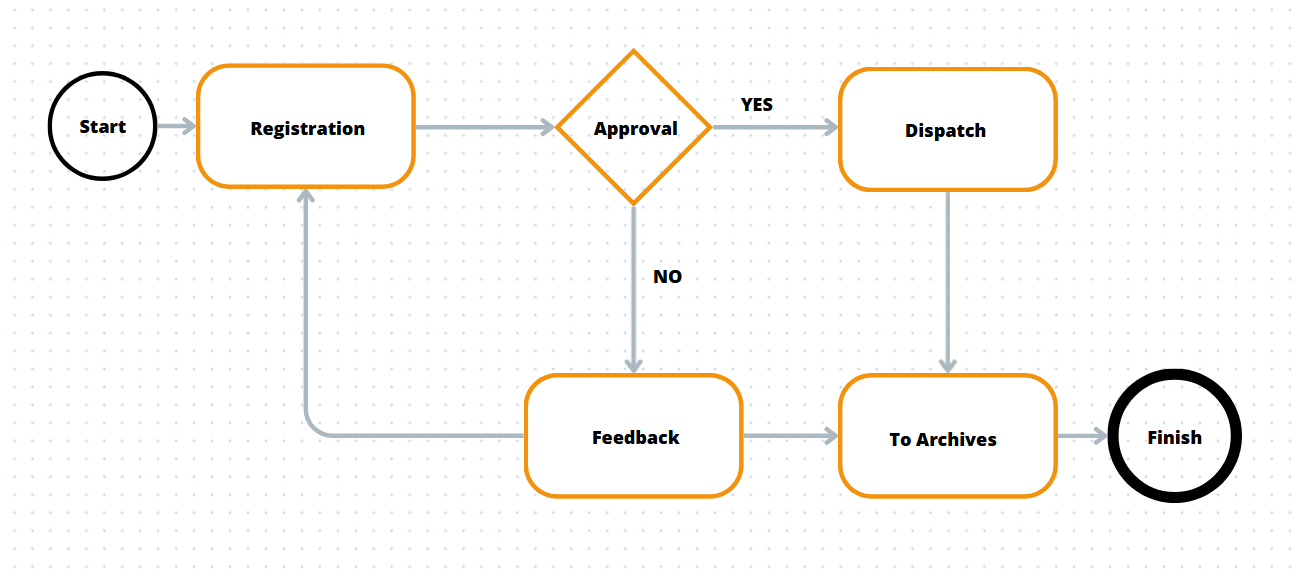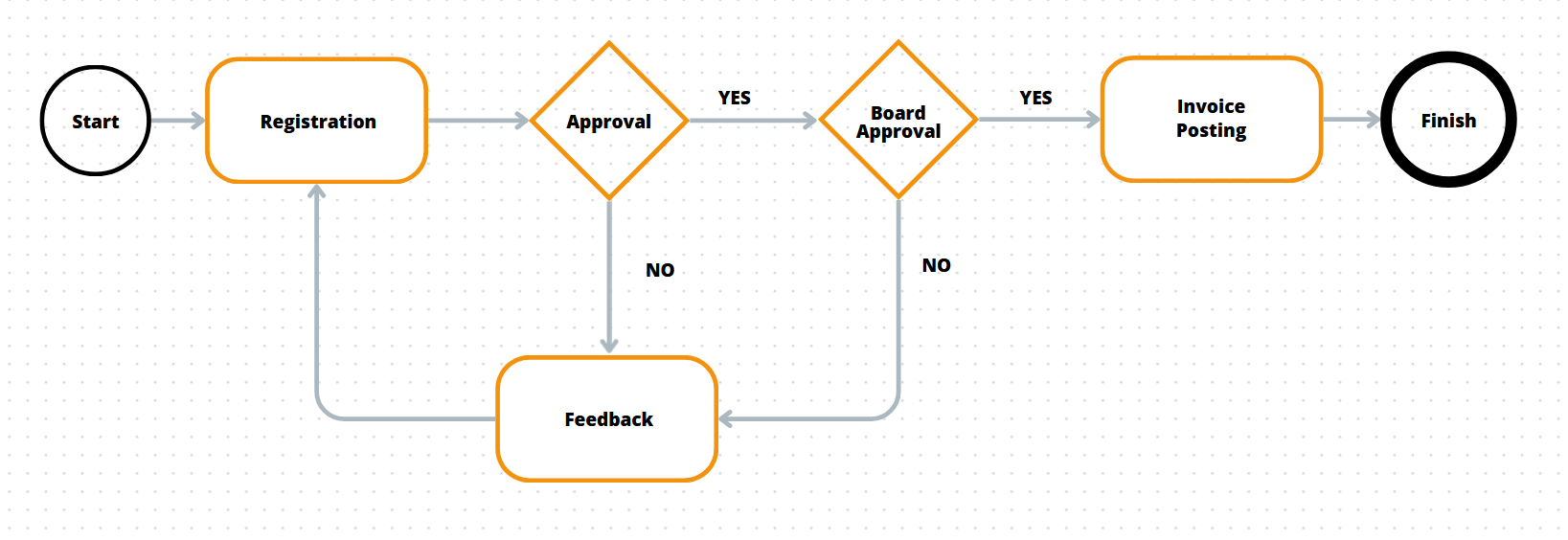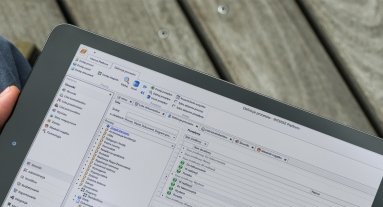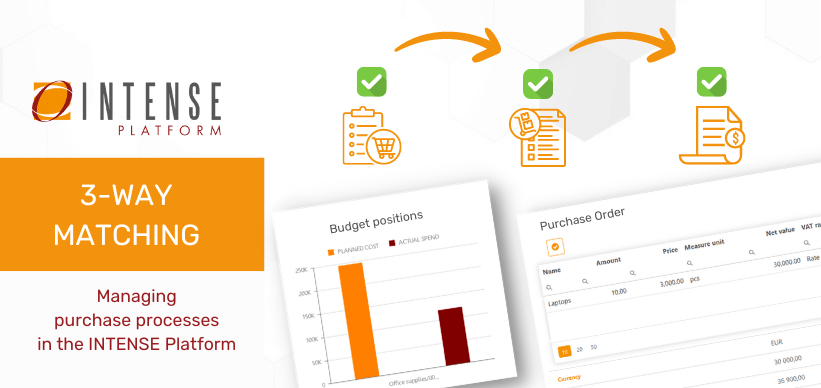
"3-Way Matching" - How to Manage the Purchasing Process Well
Three-way alignment means full control over purchasing processes. However, INTENSE Platform has even more to offer...
WHAT IS 3-WAY MATCHING?
Three-Way Matching (3-Way Matching) is a procedure that enables effective control over a company's procurement and purchasing processes.
For each purchase, the quantities and amounts contained on the purchase request, the order placed and the invoice are compared. Verification should take place at each stage of the process.
WHY IS 3-WAY MATCHING USED?
This form of control is to establish documents consistency check and eliminate fraud (e.g., in the form of false invoices) and facilitate and optimize the management of purchasing processes in the face of large purchasing volumes.
PURCHASING PROCESS MANAGEMENT IN INTENSE PLATFORM
INTENSE Platform, as a low-code/no-code system, allows for flexible process design and customization according to the needs of the enterprise.
This system is an environment that not only allows for full support of the 3-Way Matching processes, but also enriches it with a number of functionalities that complement its operation. Thanks to them, the operation of purchasing processes and their ongoing control work much more efficiently, and the employees responsible for these processes have a tool that makes performing these activities much more convenient and faster.
Each document in the process is interactively linked to the budget sheets. This means that the amounts on the Purchase Request are cross-referenced with the corresponding cost budget and are approved with reference to it. This provides the opportunity for ongoing control of expenditures against established financial plans.
In addition, from the report comparing plan and execution, a specific purchase document can be displayed, and all order items and data related to their execution can be viewed.
Working with OCR technology and e-mail inbox, all of this can be done fully digitally, automatically and even from mobile devices.
INTENSE Group's solution is a real game-changer for companies where documents and purchasing processes are an integral part of the business (which is really the case for all entrepreneurs). Our solution will also find its way into companies struggling to meet budgets or maintain full control over purchasing processes.
Based on our experience, we present selected examples of purchasing process flows to inspire you to create such paths yourself.
THE SAMPLE 3-WAY MATCHING PROCESS PRESENTED IN FOUR STEPS
IT ALL STARTS WITH THE PURCHASE REQUEST
Purchase Request is the beginning of the entire purchasing process. By filling out the form, we specify our purchasing needs, inform our superiors about them, and after approval, we can proceed with the Purchase Order process.
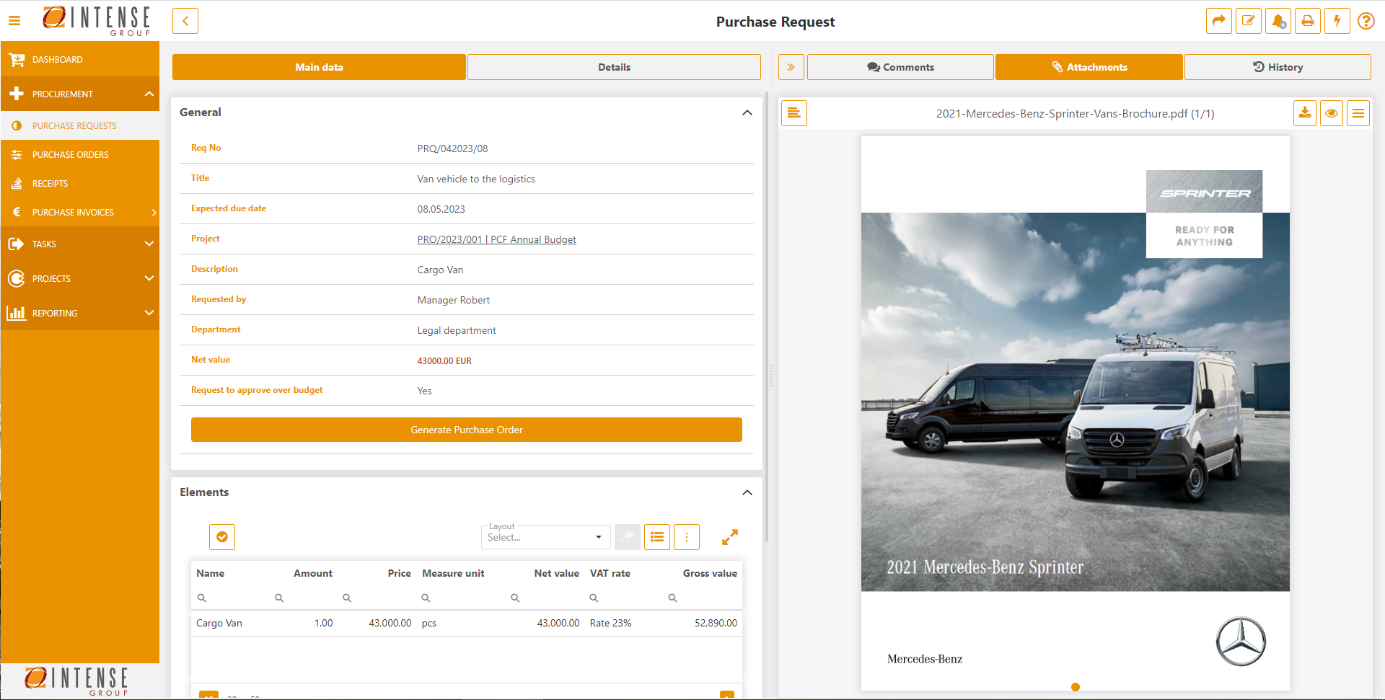
On the newly created document form, we enter basic identification information. In addition, it is possible to associate the Purchase Request with a project and indicate the responsible person. In the next section - Elements, we add specific purchase items, e.g. one item is laptop, another item is mouse.
An important element is the Analytical Description section. Here we link the document cost to a corresponding cost plan, that is, we assign the cost of the planned purchase to a specific cost item in the budget.
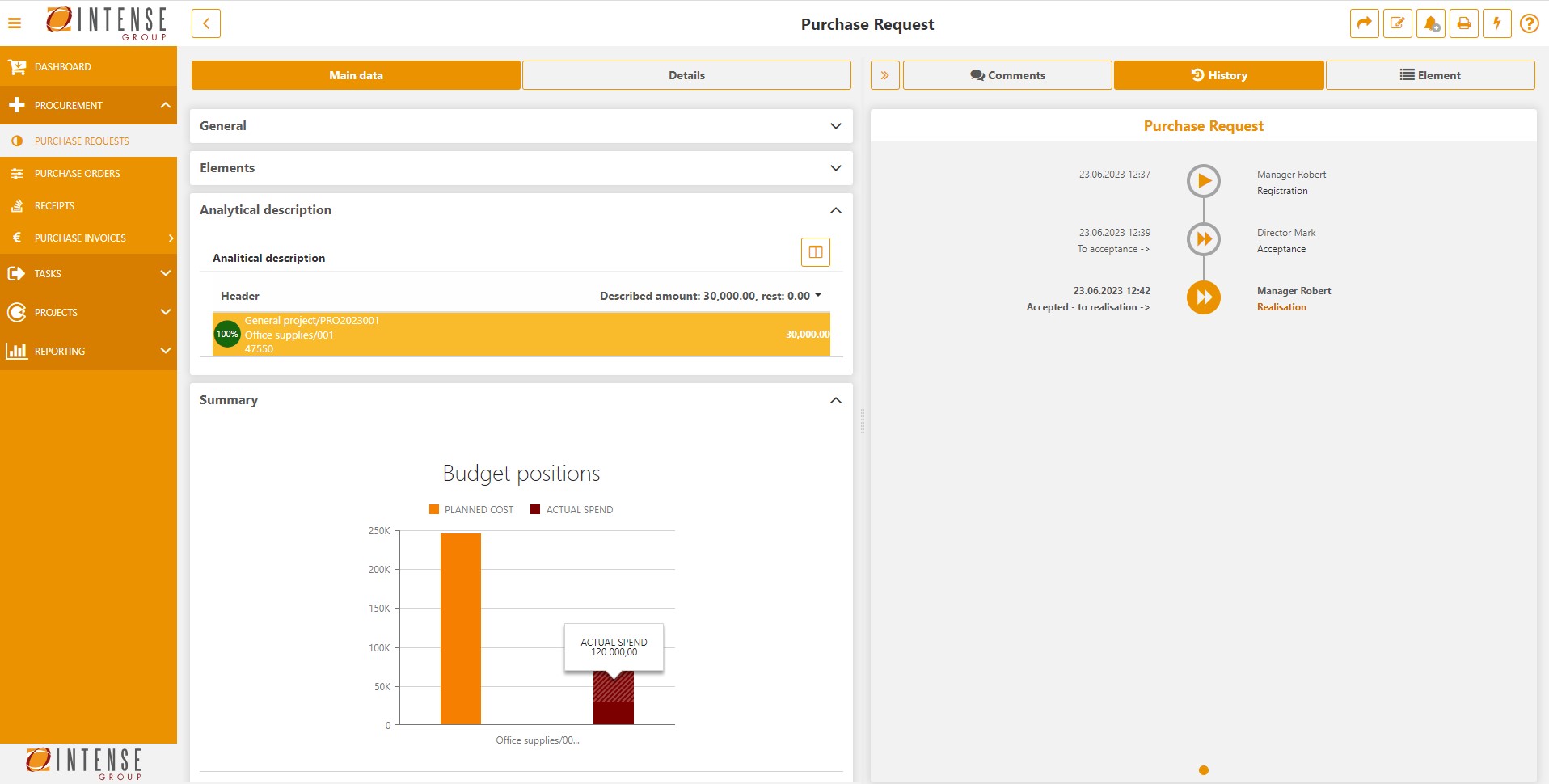
This function also allows us to accurately assess the projects costs by including all their purchasing costs.
In the summary, there is an indicator that graphically shows the comparison of planned costs against costs already incurred. Potential budget overruns will be immediately visible there.
Working with the document is very intuitive and convenient, with one click from the document level you can move to the related project or budget and vice versa. When some required data is not entered, the system displays a warning and marks those places that need to be completed. If the cost of the planned purchase exceeds the budget then a message will appear that the document requires additional approval (according to the conditions set in the process).
EXAMPLE OF DEMAND ACCEPTANCE IN A MOBILE APPLICATION
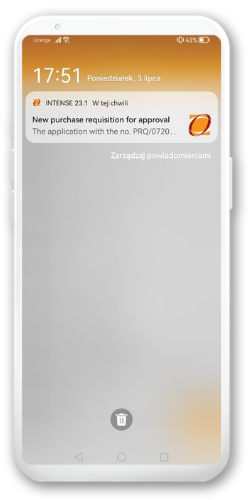
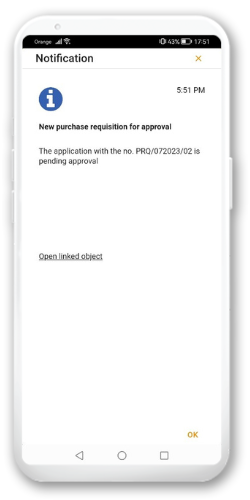
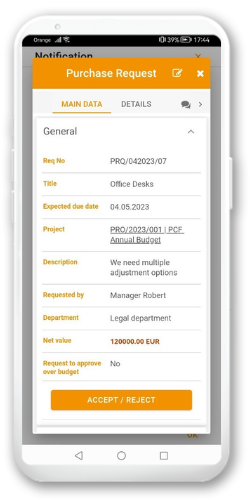
SAMPLE PURCHASE REQUEST PROCESS DIAGRAM
FULFILLING PURCHASE - PURCHASE ORDER
Once the Purchase Request has been approved by the appropriate person, the next step in the purchasing process is the Purchase Order execution stage. This document, once approved, will lead to the placement of an order with the designated supplier.
SAMPLE PROCESS DIAGRAM
WORKING WITH THE PURCHASE ORDER DOCUMENT
The Purchase Order document contains a number of the same data as the source Purchase Request document, so here we use automation (INTENSE RPA). The Purchase Order is generated and automatically filled in. Key data from the Purchase Request is transferred to the Purchase Order document. This speeds up the Purchase Order registration process considerably.
The purchase items, which are also on the Purchase Order, are also a source of information for the supplier, enabling him to properly prepare and execute the order. Based on the Order document, a printout can be generated for the supplier.
The Purchase Order document form also contains a Supplier section. In it, we enter the name of the selected supplier, contact information and delivery date. By entering supplier data, we create a database of contractors, excluding the risk of paying an invoice coming from an unknown company. It also gives us the opportunity to plan deliveries accordingly and later evaluate cooperation with the supplier.
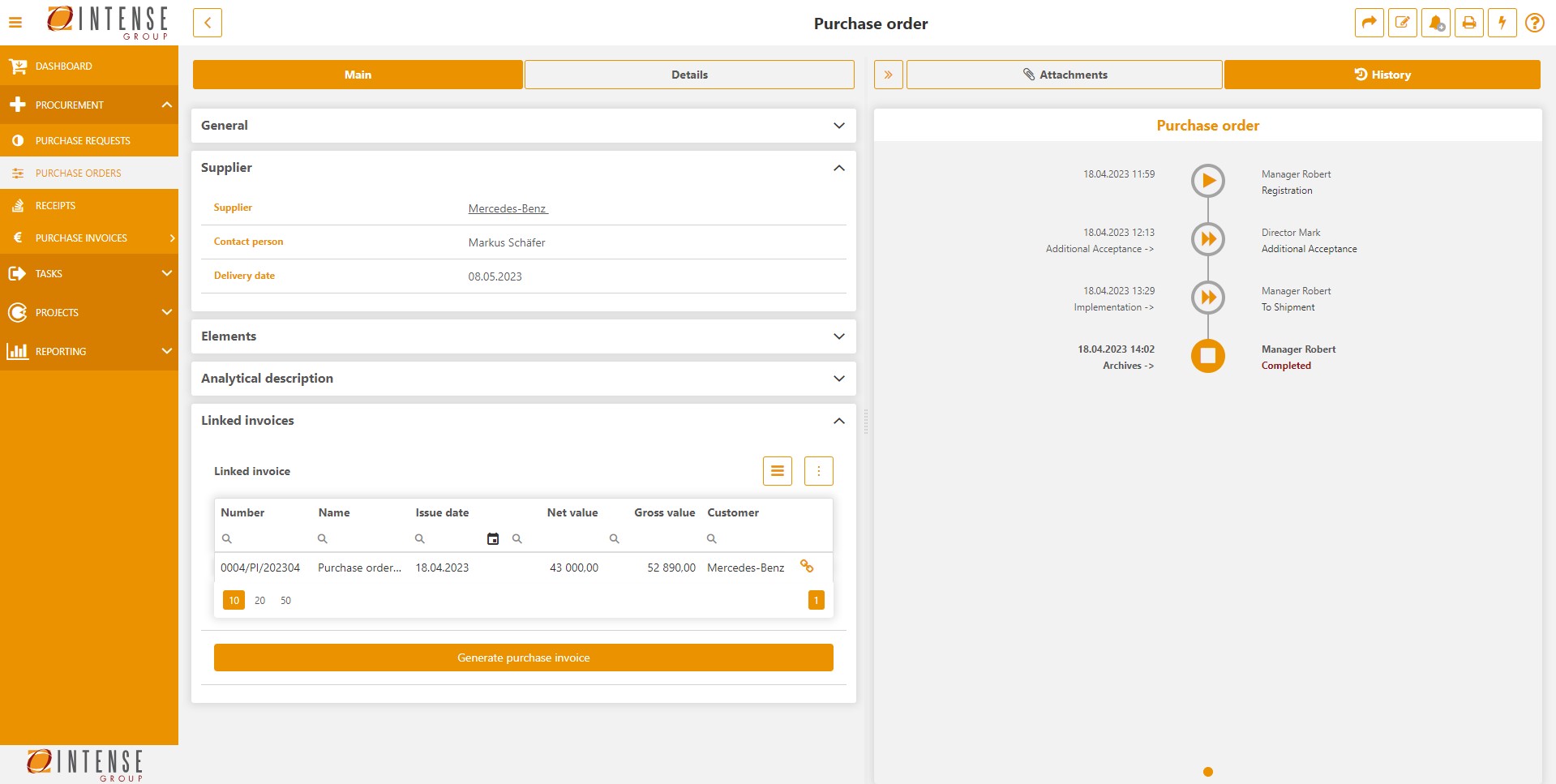
On each Purchase Request and Purchase Order, there is access to related documents: the source Purchase Request, Invoices and Receipts. This makes the entire history of a given purchasing process available in one place.
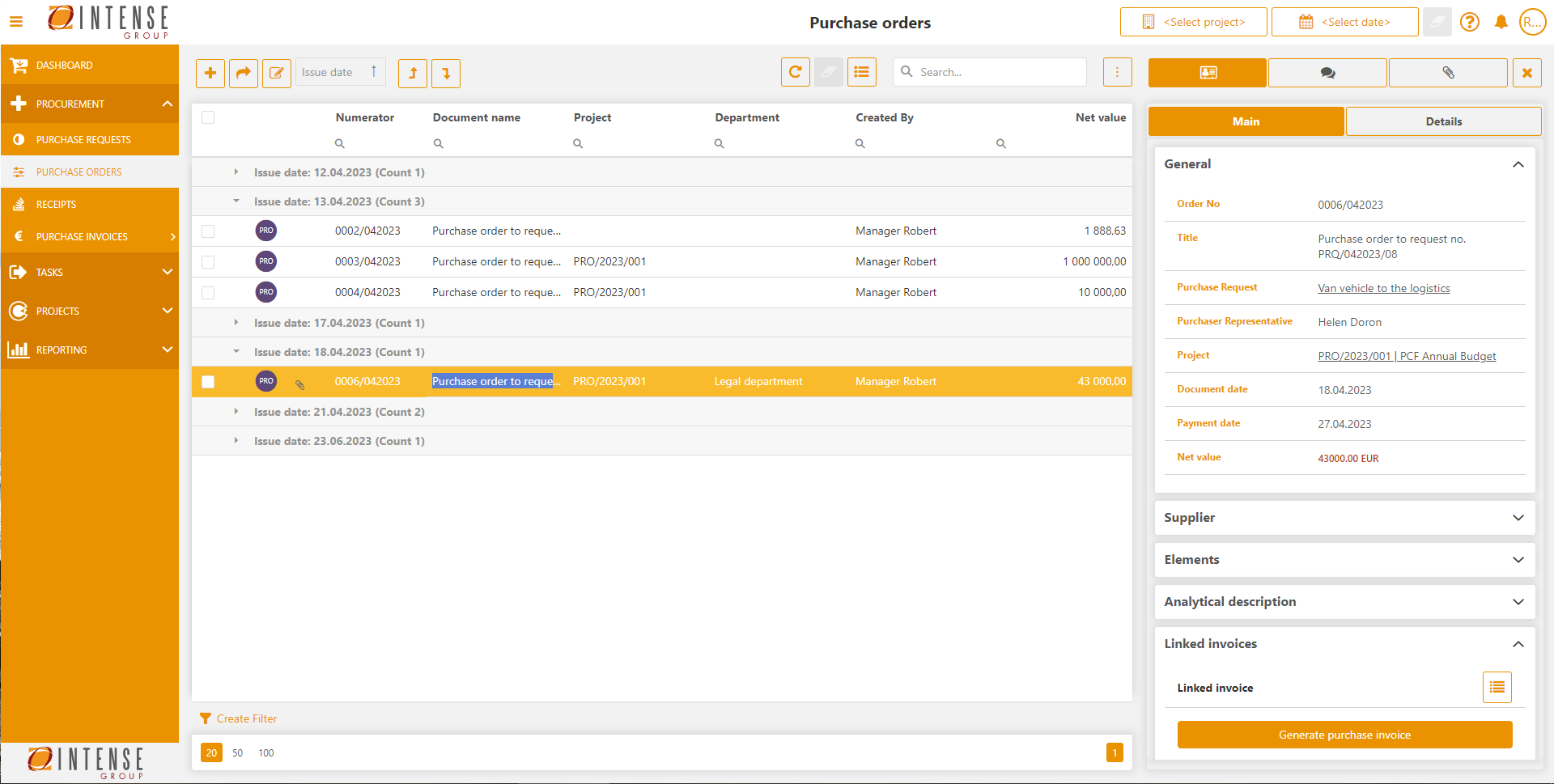
GOODS APPROVAL STAGE
When we receive a delivered order, we create a new Receipt document. In it, we specify the quantities and prices of the delivered goods and tie it to this particular purchasing process by indicating the related Purchase Order. The remaining information will be completed automatically.
There will be two special sections in the form, supporting document monitoring.
The table compares quantities and prices from the Receipt documents with quantities and prices on the Purchase Order document. Any discrepancies will be immediately signalled.
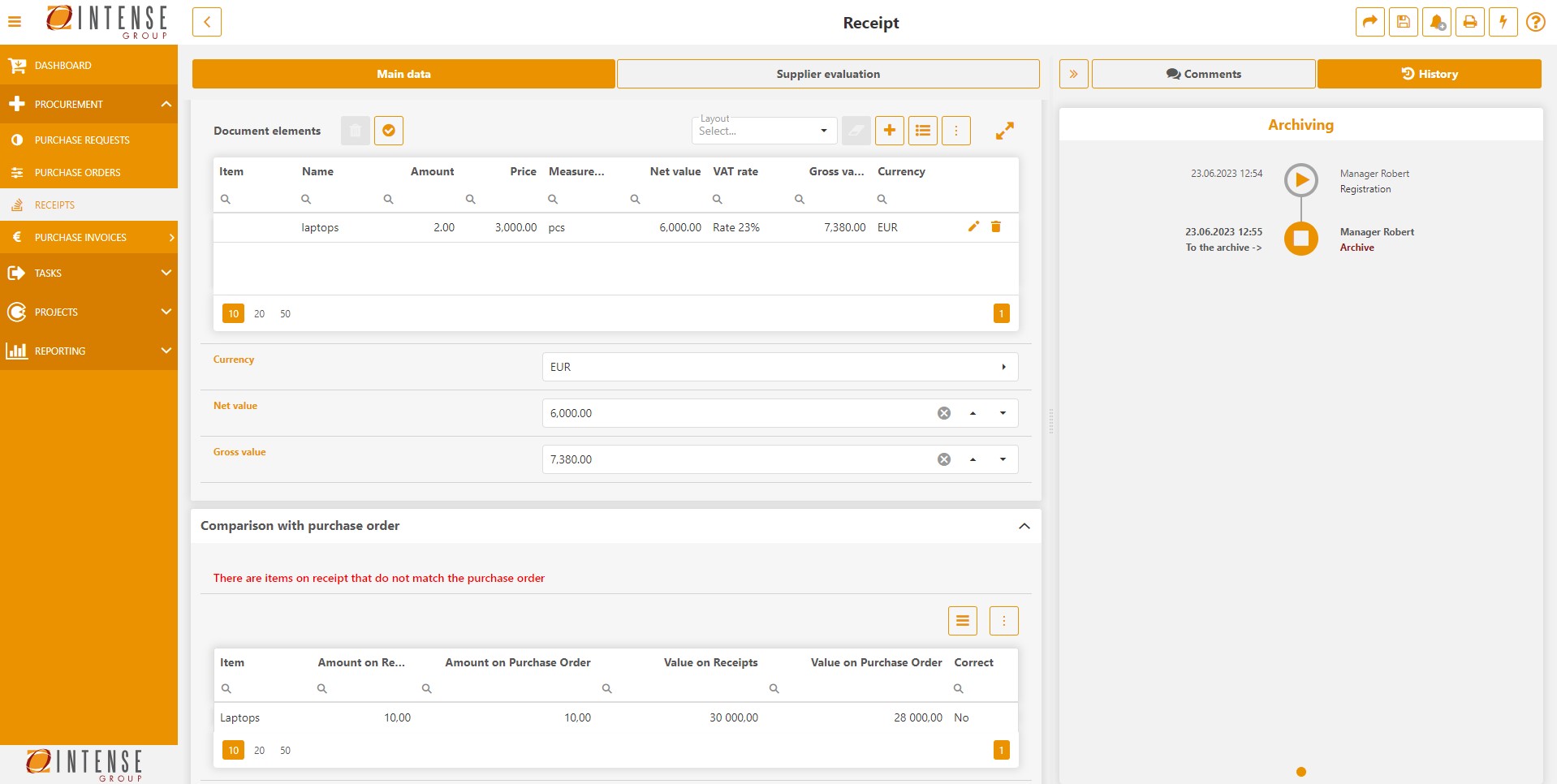
Fulfilment of an order can be divided into several deliveries, in which case several Receipt documents will be registered. All related documents will be available in one place, in the last section of the Goods Receipt document.
PURCHASE SETTLEMENT - COST INVOICE REGISTRATION
The process of entering an Invoice into the electronic document workflow can be automated. For this purpose, we use synchronization with the e-mail account, where the invoice is automatically retrieved from the e-mail. In addition, thanks to OCR mechanisms, the data from the pdf/image file is loaded by the system onto the electronic document form.
The second way, which will probably now become more widely used, is to download the invoice from the National e-Invoice System. INTENSE Platform is equipped with a module for integration with KSeF.
The invoice closes the entire purchasing process, so the final verification of all documents takes place here. In the last section, on the Invoice form, there is a table with a comparison of the data from the Invoice document with the data on the related Purchase Request and Purchase Order. If there is a discrepancy, it will be automatically signalled.
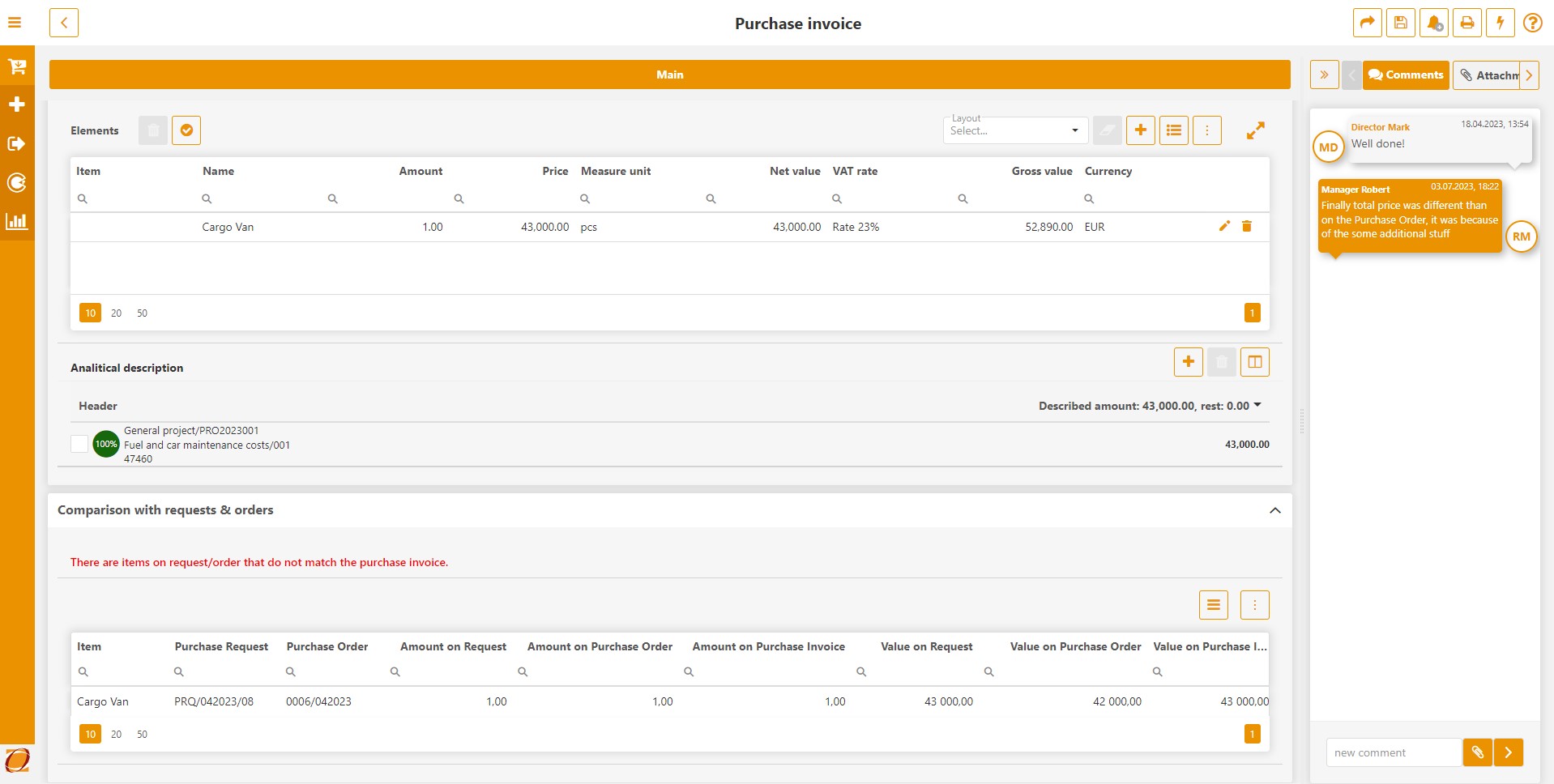
SAMPLE INVOICE PROCESS DIAGRAM
WHY SHOULD WE USE 3-WAY MATCHING?
The use of the 3-Way Matching method together with the right IT tool and automation brings an array of benefits to both the entire company and the employees handling purchasing processes. This mechanism allows you to:
1. Eliminate losses associated with fraudulent invoices or duplication of the same payments.
2. Prevention of human error.
3. Saving time through automation.
4. Avoid penalties for late payments.
5. Adequate preparation for audits.
6. Better relations with suppliers and vendors and greater control over the terms of cooperation with them.
7. Greening the company's operations by reducing paper consumption.
8. Ongoing monitoring of expenses against financial plans.
9. Relief of employees from tedious and repetitive activities.
10. As a result of all the benefits listed above, the company also has a chance to improve profitability.
INTENSE Team

 Unia Europejska
Unia Europejska


